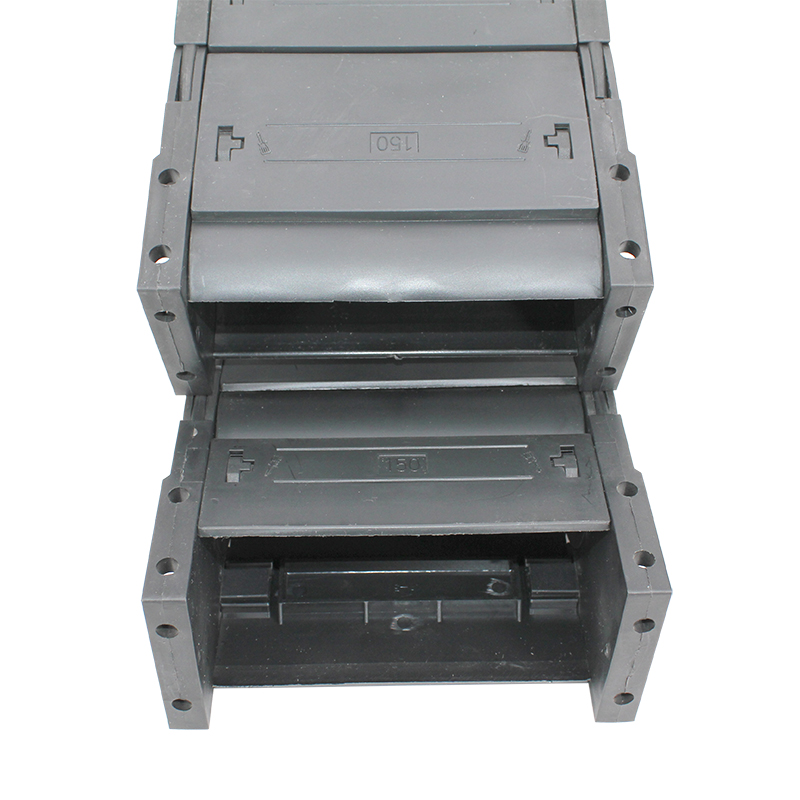open cable chain
Understanding Open Cable Chains A Comprehensive Overview
Open cable chains, also known as energy chains or drag chains, are essential components in various industrial applications, providing a streamlined solution for managing wiring and cabling. These chains offer a protective and organized means to route electrical cables and fluid lines in dynamic environments, ensuring both safety and efficiency in machine operations.
What is an Open Cable Chain?
An open cable chain is a flexible and lightweight structure designed to hold and guide cables and hoses during movement. Unlike conventional cable management systems, open cable chains are constructed with articulated links, allowing them to bend and flex without causing damage to the cables inside. This flexibility is crucial for applications where cables are subjected to repetitive motion, such as in robotics, CNC machines, or automated manufacturing systems.
The 'open' aspect of these chains typically refers to the fact that they have an accessible design, enabling easy insertion and removal of cables. This accessibility allows for quick maintenance and replacements, making them ideal for environments where downtime must be minimized.
Key Benefits of Open Cable Chains
1. Protection and Organization One of the primary functions of open cable chains is to protect cables from abrasion, cut-through, and exposure to harmful elements such as dust, moisture, or oils. This protective feature not only prolongs the life of the cables but also keeps the working area tidy and organized.
2. Flexibility and Versatility Open cable chains can be used in a variety of applications ranging from simple machinery to complex robotics systems. They can be tailored to fit specific needs, accommodating various cable types and sizes, and can even be customized with additional features, such as mounting brackets or strain relief systems.
open cable chain

3. Reduced Wear and Tear In dynamic applications where cables are constantly in motion, traditional cable setups can lead to increased wear and tear. Open cable chains minimize friction and rubbing, significantly reducing the risk of cable damage and the need for frequent replacements.
4. Enhanced Mobility The design of open cable chains allows for smooth travel and movement of cables during operation. This mobility is essential in automated systems where precise and consistent movement is required, such as in robotic arms or conveyor systems.
5. Cost-Effectiveness By protecting cables and reducing maintenance costs, open cable chains can provide a cost-effective solution in the long run. While the initial investment may seem significant, the savings from decreased cable replacements and downtime make them a practical choice for many industries.
Applications of Open Cable Chains
Open cable chains are widely utilized across various sectors, including manufacturing, automotive, aerospace, and even medical equipment. In manufacturing, they are often integrated into conveyor systems or machine tools to manage power and signal cables effectively. In robotics, these chains are crucial for ensuring that control cables are safely managed during the intricate and repetitive movements of robotic arms.
In the aerospace industry, open cable chains are used in aircraft systems to manage various lines and cables critical for operation, offering not just organizational benefits, but enhancing safety as well. In medical applications, ensuring that power and data cables remain organized and protected is key to maintaining the functionality of life-saving equipment.
Conclusion
In conclusion, open cable chains represent a vital component in modern machinery and industrial applications. With their ability to protect, organize, and facilitate the movement of cables and hoses, they enhance the efficiency and longevity of equipment. As industries continue to evolve and demand more advanced solutions for cable management, the role of open cable chains will undoubtedly grow, solidifying their importance in machinery and engineering design. Whether in a factory, a robotics lab, or an aerospace environment, the benefits provided by these innovative solutions make them an indispensable part of contemporary technology.








